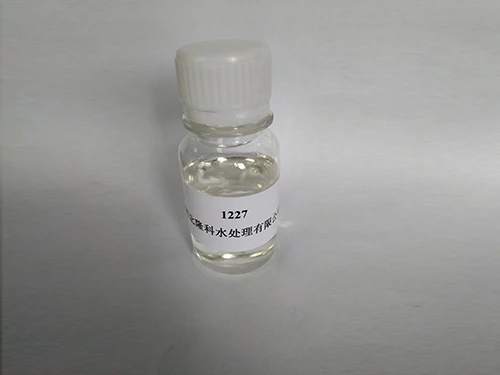Poly Aluminium Chloride Applications in Potable Water Treatment Solutions
Poly Aluminium Chloride for Drinking Water An Overview
Poly Aluminium Chloride (PAC) is an inorganic polymer that has gained significant attention in the field of water treatment, particularly for drinking water purification. As a coagulant, PAC is used to enhance the removal of suspended solids, organic matter, and other impurities from water, making it suitable for human consumption. This article explores the properties, applications, benefits, and challenges associated with the use of PAC in drinking water treatment.
What is Poly Aluminium Chloride?
PAC is a type of aluminium salt that is produced by reacting aluminium hydroxide with hydrochloric acid or by using aluminium chloride and a base. It appears as a yellowish-white powder or a viscous liquid. PAC is characterized by its high charge density and low molecular weight, which allows it to effectively destabilize and aggregate colloids in water. This property makes it a highly efficient coagulant in various water treatment processes.
Application in Drinking Water Treatment
The primary application of PAC in drinking water treatment involves its use in the coagulation and flocculation stages of the purification process. When PAC is added to water, it starts a chemical reaction that neutralizes the charges of suspended particles, allowing them to clump together and form larger aggregates known as flocs. These flocs can then be easily removed through sedimentation or filtration.
PAC is particularly effective in a range of water qualities, including those with high levels of turbidity, color, and organic matter. It is widely used in municipal water treatment plants, industrial water purification systems, and even in household water filtration units.
Benefits of Using PAC
1. Efficiency PAC has been found to be more effective than traditional coagulants like alum in certain water conditions. It works well across a wide pH range and can effectively remove small particles, resulting in clearer, cleaner water.
2. Lower dosage requirements Due to its high effectiveness, PAC often requires lower dosages compared to other coagulants, leading to cost savings in procurement and handling.
poly aluminium chloride for drinking water

3. Reduced sludge production The use of PAC typically results in lower volumes of sludge compared to other coagulants, making sludge management less cumbersome and more environmentally friendly.
4. Wide applicability PAC can be used in a variety of water sources, including surface water, groundwater, and even in wastewater treatment, thus making it a versatile solution for different water treatment needs.
5. Minimal pH adjustment PAC operates efficiently in a near-neutral pH range, reducing the need for additional chemicals to adjust pH levels during the treatment process.
Challenges and Considerations
Despite its many advantages, there are challenges and considerations to keep in mind when using PAC for drinking water treatment. One concern is the potential for residual aluminium in treated water. While PAC is safer in terms of aluminium leaching compared to other coagulants, regulatory standards dictate the need for monitoring aluminium levels to ensure they remain within acceptable limits for human health.
Another consideration is the storage and handling of PAC, as the product can be corrosive and requires proper containment measures. Additionally, the selection of the appropriate coagulant must consider the specific water quality, as varying conditions may require adjustments in dosing and PAC formulation.
Conclusion
Poly Aluminium Chloride represents a significant advancement in drinking water treatment technologies. Its efficiency, lower dosage requirements, and reduced sludge production make it an attractive option for municipalities and industries alike. However, careful consideration of its effects on water quality and compliance with health standards is crucial. As water scarcity and quality issues continue to proliferate globally, the role of effective coagulants like PAC will become increasingly pivotal in ensuring safe and clean drinking water for communities around the world.
Thus, PAC not only enhances water clarity and purity but also plays a critical role in the sustainable management of water resources, aligning with global efforts to provide access to safe drinking water.
-
lk-319-special-scale-and-corrosion-inhibitor-for-steel-plants-advanced-solutions-for-industrial-water-systemsNewsAug.22,2025
-
flocculant-water-treatment-essential-chemical-solutions-for-purification-processesNewsAug.22,2025
-
isothiazolinones-versatile-microbial-control-agents-for-industrial-and-consumer-applicationsNewsAug.22,2025
-
scale-inhibitor-key-solutions-for-water-system-scale-preventionNewsAug.22,2025
-
organophosphonates-versatile-scale-inhibitors-for-industrial-water-systemsNewsAug.22,2025
-
scale-and-corrosion-inhibitor-essential-chemical-solutions-for-water-system-maintenanceNewsAug.22,2025





